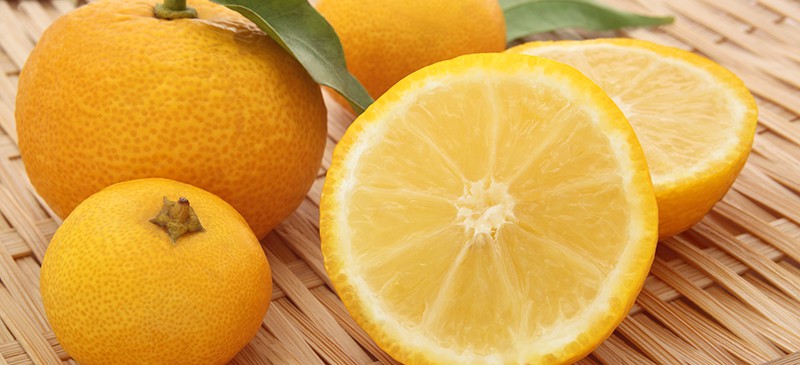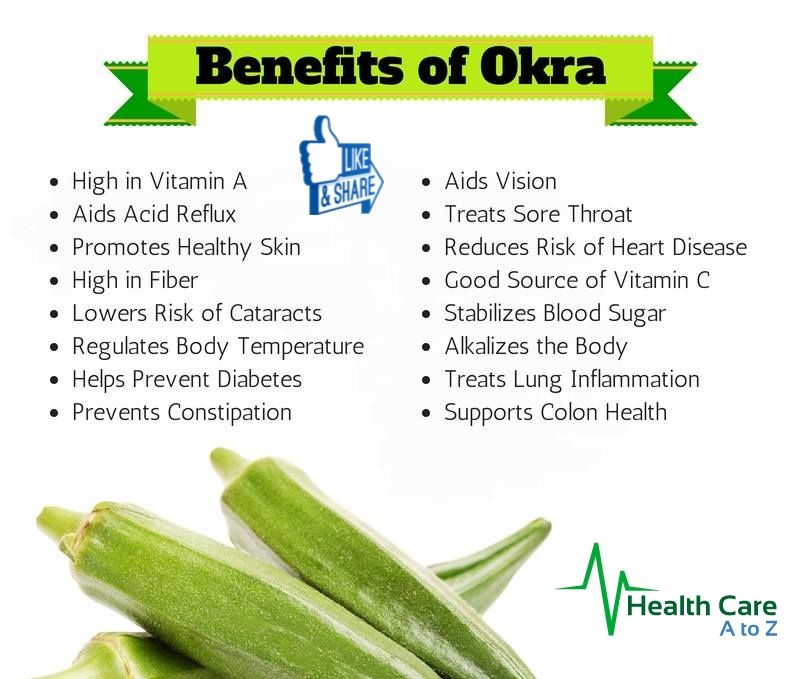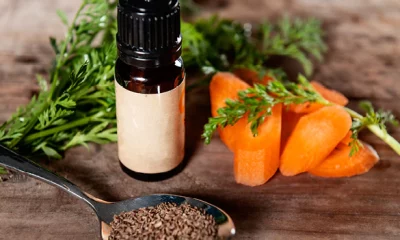Health
7 shocking health benefits of yuzu

Table of Contents
Discover the 7 shocking health benefits of yuzu.
What is yuzu? A yoga pose? A new fashionable lifestyle? Nothing of that! This is a fruit which, although bearing such an exotic and unknown name, has a very familiar allure: it looks like a lemon.
Introduction
Originally from China, yuzu is now mainly produced in Japan and Korea. This tangy-tasting fruit, located somewhere between tangerine, grapefruit, and lime, has only recently appeared in Western cuisine. However, if you are thinking of a chewable fruit, you are wrong. Containing little flesh and many seeds, yuzu is not eaten like other fruits. It is rather used as a condiment when it is not included in cosmetic products or used as a medicinal plant.
Do you want to know more about this atypical fruit? Here is its history, its benefits, and the ways you can consume it.
After being discovered in China, it is surely in Japan, where it was imported more than a millennium ago, that yuzu is of the greatest importance. In the Land of the Rising Sun, yuzu is not only part of a large number of traditional recipes, but it is also used as a medicinal plant and is even found in some rituals!
Thus, according to Japanese tradition, taking a yuzu bath on the day of the winter solstice would have many benefits. Indeed, it would protect the joints, improve blood circulation and strengthen the body against diseases. As for the date of the tradition, it was not chosen at random: the winter solstice marks the end of the yuzu harvest, but also the renewal due to the days which, after having considerably shortened, finally begin to lengthen
Yuzu grows on a tree of the same name, which you might have come across if you’ve been to Japan. This usually takes the form of a thorny shrub but can grow up to 4 meters high.
Yuzu cultivation is far from productive. Indeed, it takes 20 years for the yuzu to give its first fruits and a tree will only produce 15 to 20 kilos of fruit per harvest. However, since yuzu contains very little juice, a tree can only produce about 3 liters of juice per harvest. This has a direct influence on its price, which is much higher than other fruits.
But the yuzu doesn’t really look like a first-class fruit. Its thick skin is bumpy and irregular, far from the smooth, perfect shape that fruits typically display. What makes it famous in the eyes of cooks is the scent it contains. Very intense and very appreciated, it only takes a small amount to add flavor to an entire dish.
What are the health benefits of yuzu?
Rich in flavonoids, fibers, and vitamins A and C, yuzu notably has antioxidant and anti-inflammatory properties. Here are the 7 main health benefits Of yuzu.
1) It repairs the skin and fights against its aging
Yuzu is found in the composition of a large number of cosmetics, and for good reason: it is very good for the skin.
First of all, thanks to its vitamin C content, yuzu participates in the production of collagen, a protein that plays an essential role in the composition of our skin. This not only repairs the skin, but also strengthens it, moisturizes it and makes it soft and beautiful, while preventing the appearance of wrinkles. Yes, just that!
To fight against skin aging, vitamin C can also take advantage of the help of flavonoids and limonoids, two antioxidants that are also present in yuzu. At three, they fight and eliminate free radicals. This is important because, when these are present in too large a quantity in our body, they attack the cells and cause them to age, which causes wrinkles to appear on our face and our body.
Finally, the yuzu also participates in the healing of the skin and helps to accelerate it.
2) It strengthens the hair
Is your hair thin and brittle? Thanks to the flavonoids it contains, yuzu can help you remedy your hair problems. This is because flavonoids help reduce the permeability of capillaries, which helps strengthen the hair.
For better efficiency, you can apply the yuzu directly to your hair. However, you will then need to mix it with your shampoo because using it alone could irritate your scalp
3) It gives energy
Thanks to its richness in vitamin C, yuzu helps to replenish energy and fight against fatigue. Vitamin C also works on the muscles, helping you not to feel physically weak.
In addition, yuzu significantly promotes the absorption of iron and calcium by the body. However, these two proteins play an essential role against fatigue. If they are not in sufficient quantity in the body, your energy will take a hit.
4) It strengthens the immune system
Besides increasing our energy level, vitamin C also takes care of our immune system. Indeed, vitamin C participates in the defense of immune cells and acts on their mobility. This makes them stronger and more able to fight against external aggressions.
Yuzu also contains other antioxidants, such as polyphenols, which help protect our bodies against disease.
5) It prevents cardiovascular disease
Polyphenols help prevent the development of cardiovascular disease. Indeed, yuzu is particularly effective against platelet aggregation, which can promote the creation of a clot. However, the clot can end up blocking a blood vessel leading to the brain, which would then cause a TIA (transient ischemic attack).
However, to be effective, yuzu must be consumed regularly and as a supplement to a healthy diet.
6) It reduces the risk of suffering from cancer
Among the long list of diseases that yuzu can help prevent is cancer. According to a study, yuzu could indeed prevent cancer by fighting free radicals that attack cells. This is due to the antioxidants they contain, among which we find vitamin C, flavonoids and fiber.
7) It facilitates intestinal transit
The fibers and vitamins found in yuzu help speed up intestinal transit and thus improve digestion. This helps fight digestive disorders such as constipation.
How to consume yuzu?
As we have said, yuzu and its juice are far from being the cheapest products on the market. Fortunately, it is not a fruit that it is customary to chew or drink.
As a general rule, its juice is used as a seasoning and its zest is collected to make a condiment. You will also have difficulty finding fresh yuzu in its natural form. Rather, it is sold as a juice, dehydrated zest and powder.
Thanks to its particular taste, yuzu goes well with both sweet and savory. Great pastry chefs like to use it in their creations, but you can also use it with your meat and fish, in jam or sauce, or in a large number of Japanese recipes and sweet and savory recipes. There are many possibilities!
Either way, don’t have a heavy hand: a small dose of yuzu is usually enough to flavor an entire dish.
How to use Yuzu?
Yuzu cannot be enjoyed on its own, as such. Rather, it is used as a condiment. It goes well with both savory and sweet dishes. It is traditionally found in marinades and sauces for fish and shellfish, or to accompany a small salad of tofu with herbs.
And you, the yuzu, do you like it? Do you already have some in your cupboards?
Health
Managing Chronic Pain: Integrative Techniques for Wellness

Key Takeaways
- Understanding chronic pain and its various treatment options is essential for effective management.
- Lifestyle factors, including diet, exercise, and sleep, can significantly influence chronic pain.
- Integrative techniques, including medical treatments and complementary therapies, are vital in tackling pain holistically.
Understanding Chronic Pain
Chronic pain is a persistent type of pain that can last for months or years and may be caused by various factors. In contrast to acute pain, it can continue even after the original injury has healed. Healthcare professionals evaluate a patient’s self-reported pain level and the impact it has on their daily activities to address the complexity of chronic pain. When the underlying cause is unknown, multidisciplinary approaches are necessary to relieve pain.
The Role of Lifestyle in Chronic Pain Management
In the quest for relief, many find solace in discovering a reputable pain clinic near me that employs a range of treatment options. Diet and chronic pain have a significant, if not entirely understood, relationship. Pro-inflammatory foods, excessive caffeine, alcohol, and refined sugars tend to exacerbate inflammation, potentially intensifying pain. On the other hand, anti-inflammatory foods such as fatty fish, greens, nuts, and seeds may help reduce inflammation and, as a result, pain. Consistent hydration and balanced meals can support the body’s natural coping mechanisms. Creating a personalized diet plan with a nutritionist or dietician can be a proactive step in managing chronic pain through lifestyle. Being physically active is critical to managing chronic pain.
Medical Treatments for Chronic Pain Relief
Medications often serve as the first line of defense in chronic pain management. NSAIDs, for example, are commonly used to alleviate inflammation and pain. Antidepressants and anticonvulsants can also be prescribed for their pain-relieving properties. Caution must be taken, especially with more robust, potentially habit-forming medications such as opioids; these should only be used when necessary and with a strict plan for monitoring and tapering. Furthermore, patients are encouraged to ask their healthcare providers about potential side effects and interactions with other medications.
Beyond pharmacological measures, interventional treatments like nerve blocks, epidural steroid injections, and radiofrequency ablation offer non-surgical pain relief for various conditions. In some cases, these targeted procedures may provide lengthy periods of relief and help patients engage in physical therapy and rehabilitation more effectively.
With chronic pain being such a dynamic and individualized issue, research into new therapeutic methods is ongoing. Treatments such as platelet-rich plasma therapy (PRP) and stem cell injections are emerging as potential alternatives. They focus on repairing damaged tissues and reducing pain naturally. However, consulting with experienced pain management specialists before considering these advanced options is essential.
Psychological Approaches to Pain Management
Chronic pain has deep psychological and emotional roots in addition to physical causes. Therapies like Cognitive Behavioral Therapy (CBT) address the thought patterns that can worsen pain perception and decrease the quality of life. Patients can learn to change these thoughts, engage in positive behaviors, and develop strategies to manage setbacks in their pain journey. Biofeedback is a technique that measures and provides real-time data on bodily functions, such as heart rate, muscle tension, and skin temperature. It helps patients gain voluntary control over these functions, and mastering such autonomic processes can improve pain management and give a greater sense of personal power.
Emotional well-being is integral to pain management, as negative emotions can intensify pain perception. Healthcare providers may recommend therapy sessions to address the psychological impacts of chronic pain, helping individuals cope with associated feelings of frustration, depression, or isolation. These therapeutic approaches highlight the importance of treating chronic pain as a comprehensive, biopsychosocial condition.
Navigating the Healthcare System
The complexity of healthcare systems can add a layer of stress for those managing chronic pain. Advocacy is critical. Patients must feel empowered to ask questions and make informed decisions regarding their care. Understanding how health insurance works, what treatments are covered, and how to access necessary medications is imperative. Healthcare professionals can also be invaluable allies in helping patients navigate these systems and ensure that they receive appropriate and timely care.
Looking Ahead: The Future of Pain Management
As we learn more about pain, there is hope for better pain management through new treatments and technologies. For example, virtual reality therapies can help distract patients from pain and reduce its intensity by immersing them in relaxing environments. Scientists are also exploring innovations in pharmaceuticals, non-invasive brain stimulation techniques, and cognitive behavioral therapy apps to treat chronic pain more effectively. Additionally, personalized medicine, which considers an individual’s genetic makeup, lifestyle, and environmental factors, is set to revolutionize pain management.
Health
Benefits of okra Health

Table of Contents
Health
10 shocking health benefits of tequila

Table of Contents
- Health benefits of tequila
- 1.-Benefits of tequila for weight loss
- 2.- Tequila for Digestion
- 3.- Tequila for Diabetes
- 4.- Tequila for Dementia
- 5.- Tequila for insomnia
- 6.- Hangover
- 7.- Tequila boost the immune system
- 8.- Helps the necessary medications reach the colon
- 9.- It can help prevent type 2 diabetes.
- 10.- It can help fight osteoporosis
- What is Tequila?
- Types Of Tequila
- Nutritional value of tequila
- How To Make Tequila At Home?
- Side Effects of Tequila
- Tequila is one of the most popular spirits in the world, famous for its key role in legendary cocktails and its strong cultural roots, but it also has certain health benefits that many people are unaware of!
- Did you ever know that tequila can help you lose weight? While tequila is not a “health food,” it has several surprising health benefits. Look for “100% agave” tequila, get the best health benefits, and take 1 or 2 shots. Here are 10 surprising benefits of tequila.
Health benefits of tequila
There are several surprising benefits of tequila that can help you with your health, including its ability to do the following:
• Regulates blood sugar levels
• Improves digestion
• Weightloss
• Minimize hangover symptoms
• Prevent dementia
• Prevent nausea
• Boost immunity
1.-Benefits of tequila for weight loss
Being lower in calories than most other forms of liquor, this Mexican specialty can help you lose weight by cutting a few calories from your daily or weekly alcohol intake.
Crazy, right? In general, the rule of thumb is that if you want to lose weight, don’t drink alcohol.
- Remember, liquid calories go down much more easily than we think, so it’s still true; But if you can drink a controlled amount of tequila, you can benefit from the weight loss properties of agavins, which are a particular type of sugar in tequila.
Not to be confused with agave nectar, agavies have a less refined molecular structure that does not raise blood sugar levels.
As a result, many of the calories pass through the system unused compared to other sugars in alcohol, which are not as glycemic-friendly. It also stimulates the metabolism and helps dissolve fats.
2.- Tequila for Digestion
Research has shown that the benefits of tequila are capable of stimulating the activity of probiotics in the gut, and thanks to the yeast present in this alcohol, it can help balance the bacterial environment in your gut.
- Taking a shot of tequila after a meal has also been linked to aiding digestion. Some suggest a drink before a meal to boost your metabolism and appetite, followed by a shot to calm and aid digestion.
3.- Tequila for Diabetes
The fructans present in this alcohol have been shown to slow the release of glucose into the bloodstream, which improves the symptoms of diabetes.
-
4.- Tequila for Dementia
Some studies claim that the agavines present in tequila benefits and other active ingredients in this alcohol can help stimulate neuronal activity and slow down the onset of neurodegenerative diseases.
- The BBC reported studies showing a link between people who drink moderate amounts of alcohol (including tequila) and a lower incidence of dementia later in life.
But be careful! It also showed a correlation between people who drank too much alcohol and those who had much higher rates of dementia onset.
5.- Tequila for insomnia
Like many alcohols, tequila is a sport, in the sense that it will make it easier for the body to calm down and sleep; however, excessive consumption can cause unconscious and unhealthy sleep, so it should be consumed in moderation.
Thanks to its relaxing benefits, tequila can help calm the nerves and can even help induce sleep for the homeless; It is best not to depend on any substance, particularly alcohol, regularly. But now and then it can be something extra that you can enjoy to relax. And doze!
6.- Hangover
Unlike many other types of alcohol, this liquor is believed to minimize many side effects of a hangover.
That’s if you drink things off the high shelf. Again, you must drink “100% agave” tequila to get this benefit; the cheaper brands will be filled with other sugar alcohols, which will blow you away.
No alcohol is healthy, but if you’re inclined to have a drink now and then, tequila might not be such a bad option. Cheers!
7.- Tequila boost the immune system
Popular natural remedies for the common cold and flu include the use of lime and tequila.
8.- Helps the necessary medications reach the colon
People with illnesses that affect their digestive systems, such as Crohn’s disease, IBS, and colitis, could be getting a boost from the fructans present in tequila, as it contains natural chemical vehicles that protect the medications necessary for them to can pass acid from the stomach and into the colon where it is needed. Scientists are studying the use of these fructans in prescription drugs for these diseases.
9.- It can help prevent type 2 diabetes.
It also presents the opportunity for diabetics to enjoy the benefits of tequila from time to time, since fructans are indigestible, it acts like fiber. Bypassing through the body undigested prevents the dangerous spike in blood sugar and stimulates insulin production.
If you have diabetes, talk to your doctor before starting tequila, as each individual is different and reactions can vary.
10.- It can help fight osteoporosis
Again with those agavins, the benefits of tequila have been linked in several studies to its ability to aid the body in absorbing calcium, and therefore could be a viable option to prevent the development of brittle or brittle bones.
• It’s pro-biotic: You’ve probably heard about probiotics by now, but if not, probiotics are the healthy bacteria that populate our intestines; They are responsible for the majority of our immune system and help our bodies maintain a healthy balance.
Some of the fructans that tequila is derived from really supply these good guys; Again, we are talking about small amounts of tequila; Getting drunk will do the exact opposite and wipe out your natural stores of healthy bacteria, as your immune system is forced to work overtime with the toxins inherent in any alcohol.
• It’s pre-biotic: Setting the stage for good bacteria, prebiotics help take care of the soil, so to speak. They create a living space for themselves.
According to this study, the prebiotic attributes of tequila help make the intestines a friendlier environment for healthy bacteria to thrive.
What is Tequila?
Tequila is a popular type of liquor made from the blue agave plant, and limited in terms of production to the Jalisco region of Mexico. The extracted agave juice is allowed to ferment, which eventually leads to the formation of alcohol in the liquid.
The name itself comes from the city of Tequila, where a large percentage of the production is still produced. It is often confused with mezcal and is a type of mezcal, but mezcal can be made from any type of agave.
Types Of Tequila
There are over 300 different types of tequila on the market, and they range in color from completely pure to dark brown. The aroma is similarly diverse, depending on the type of alcohol you are consuming. There are four main types of tequila:
• White: a pure or transparent white liquor that has been allowed to age less than 2 months
• Reposado – Aged between 2 months and 1 year in oak barrels
• Anejo – Aged between 1 year and 3 years in oak barrels
• Extra Anejo – Aged for at least 3 years
Nutritional value of tequila
When it comes to nutrition, this liquor contains just 64 calories per serving, compared to nearly 100 calories in a vodka dose.
Also, you are less likely to require sugary mixers with this alcohol, as it has a natural sweetness, thus reducing your average caloric intake with this type of cocktail.
This Mexican favorite is also gluten-free, making it ideal for celiac patients. There are also against and fructans in tequila, unique compounds that have various effects on our health.
In terms of alcohol content, this liquor generally ranges from 32% -60%.
How To Make Tequila At Home?
For those who love this alcohol, it is possible to make your tequila at home, but it can be a complicated process.
• First, you must harvest the agave from one of the limited regions where blue agave plants grow in Mexico.
• You will need to cook the agave and then crush the agave hearts, which grind and squeeze the juice that is necessary for the production of the alcohol.
• Next, you need to store a large amount of agave juice in a fermentation tub until the alcohol begins to form.
• At this point, you can store the alcohol in large oak barrels and allow it to age between two months and five years.
It is possible to make your own, but given the time-consuming nature of production, people usually leave it to the professionals.
Side Effects of Tequila
If consumed in excess, tequila will result in the following:
• Potential nausea
• Dizziness
• Lack of coordination
• Dehydration
• Constipation
• Headaches
• Throwing up
• Body pain
• Soft spot
Essentially, tequila is a form of alcohol that can get you drunk, and while hangovers are less likely, binge drinking will result in a painful morning.
-

 Food2 months ago
Food2 months ago8 shocking benefits of leek juice and side effects
-

 Food1 month ago
Food1 month ago10 + Benefits of carrot juice and side effects
-

 Health1 month ago
Health1 month agoBenefits of guava leaves Sensually
-

 Health2 months ago
Health2 months ago10 shocking health benefits of Canary seed milk
-
Weight Loss1 month ago
Chrissy Metz Weight Loss Secret (2022)
-

 Health1 month ago
Health1 month ago7 health benefits of cashew leaves and side effects
-

 Weight Loss1 month ago
Weight Loss1 month agoKelly Osbourne weight loss 2022
-

 Food2 months ago
Food2 months agoHealth benefits of gongolili or vetiver and side effects












